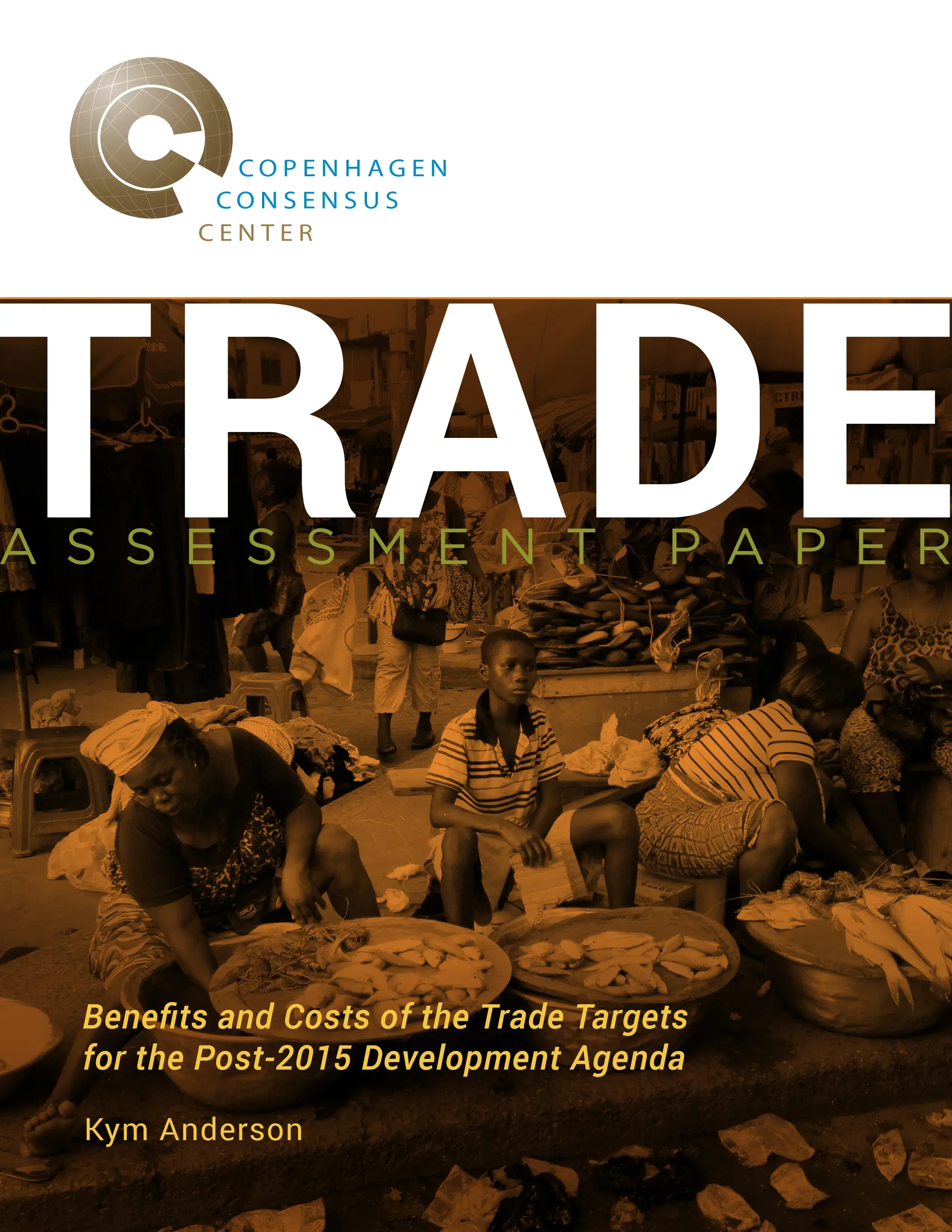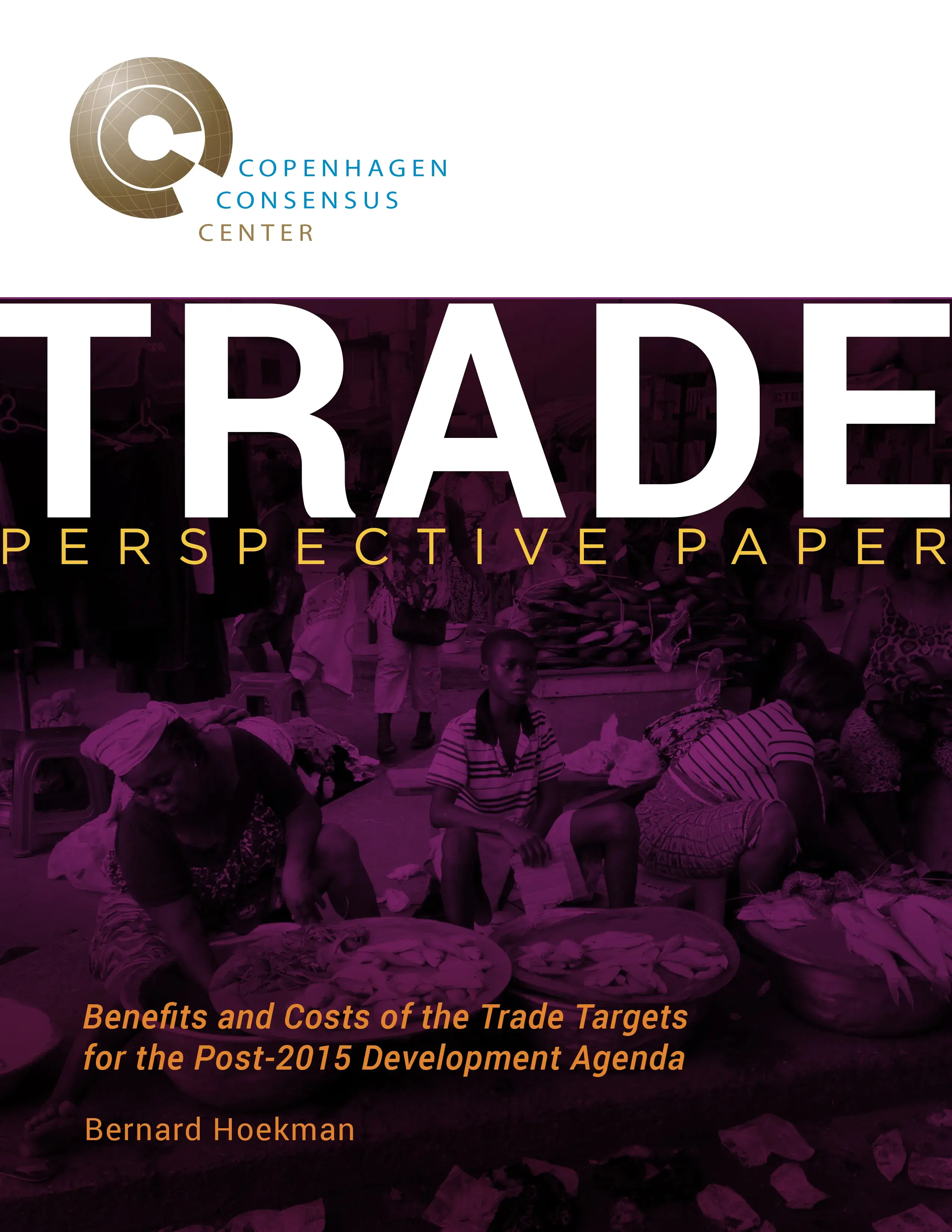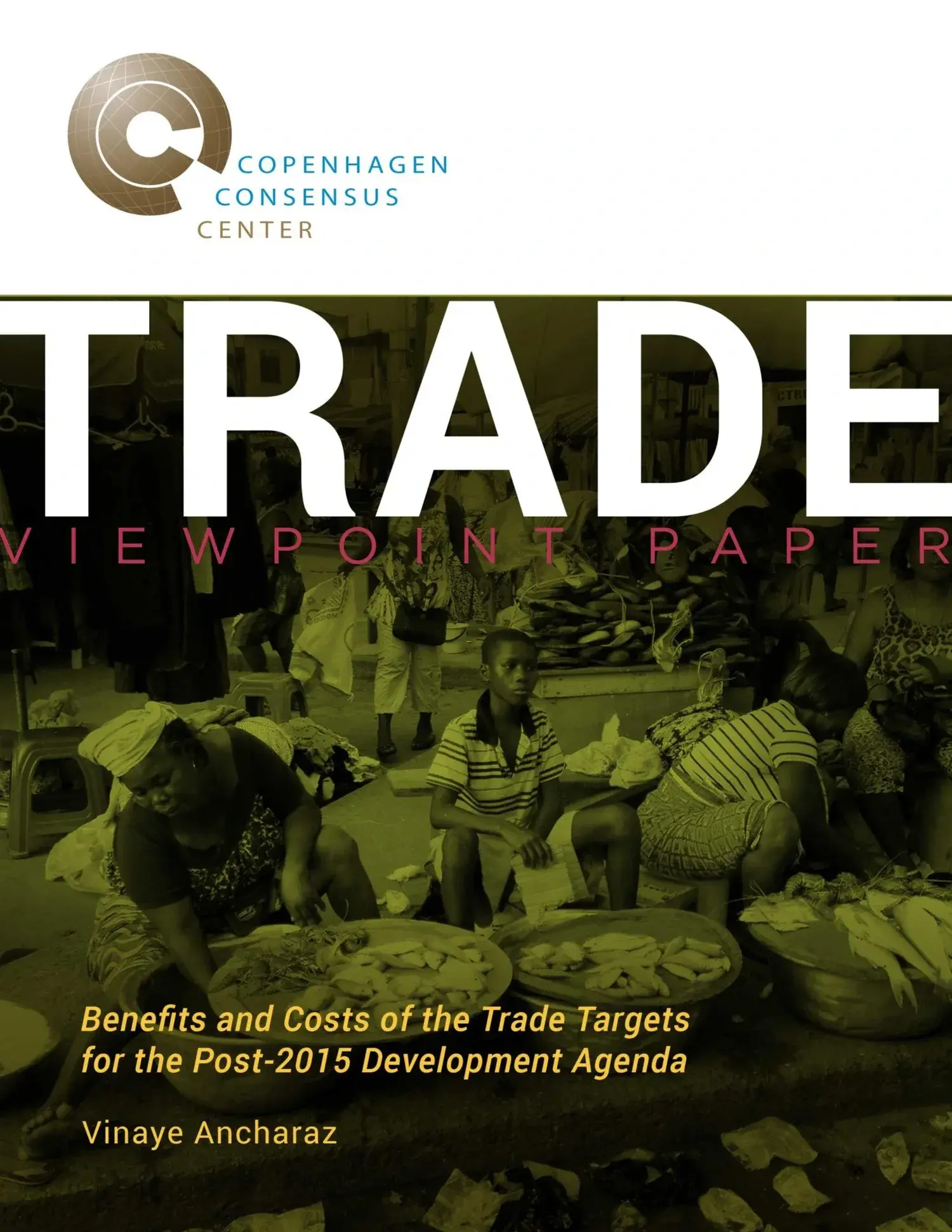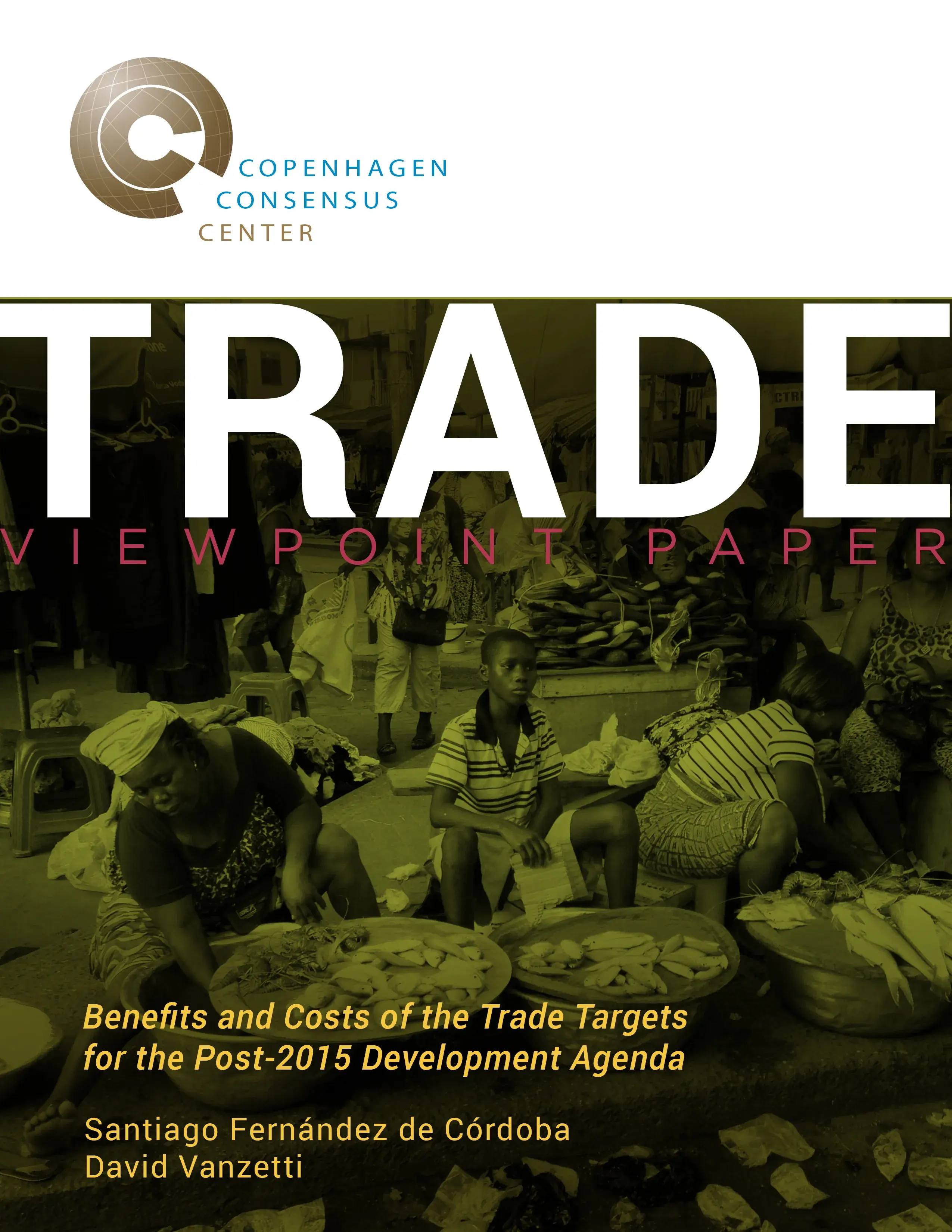Trade
The goal with the highest benefit-cost ratio in the area of trade policy reform is:
- Complete the languishing Doha Development Agenda process at the World Trade Organization, which will return ~$2000 to the world for every dollar spent and ~$3,400 to developing countries as a group for every dollar spent.
Three other goals in this area which have valuable global benefit-cost ratios are:
- Implement a free trade agreement between member states of the free trade area of the Asia Pacific which will return ~$1,700 to the world for every dollar spent and ~$2,600 to developing countries as a group for every dollar spent.
- Implement a free trade agreement between selected APEC countries (known as the Trans-Pacific Partnership) which will return ~$1,200 to the world for every dollar spent and ~$1,900 to developing countries as a group for every dollar spent.
- Implement a free trade agreement between ASEAN countries and China, Japan and South Korea (known as ASEAN+3) which will return ~$1,900 to the world for every dollar spent and ~$3,400 to developing countries as a group for every dollar spent.
Scroll down to read our series of reports examining trade targets for the post-2015 development agenda, written by leading economists and experts.
Assessment Paper
Kym Anderson, Professor of Economics at University of Adelaide and Australian National University, estimates the costs and benefits of various trade reform packages. He shows that allowing freer trade, particularly initiating the Doha Development Round reforms, would have benefits of more than 1500 times the cost. Achieving this target would make it easier to reach other post-2015 goals like reducing poverty, inequality and hunger, and spurring economic growth and job creation. Startlingly, he estimates that there would be 160m fewer people in extreme poverty by 2030 if the full Doha Development Round was implemented.
Pre-announced, gradual reductions in trade barriers, especially if agreed multilaterally under the WTO’s DDA, would yield huge economic benefits and relatively little economic cost… Moreover, the net social and environmental effects of such reform also would be very positive, assisting in the achievement of several of the other targets in the UN’s Post-2015 agenda.”
- Kym Anderson

Perspective Paper
Bernard Hoekman, Chair and Research Director of Global Economics at the European University Institute, argues that Anderson’s focus on tariffs ignores the gains from reducing non-tariff measures, such as import restrictions. He argues that a better target would focus on reducing the costs of trading – which would allow governments to work with stakeholders to reduce all the barriers to trade including domestic policies, non-tariff measures and trade infrastructure.
A trade cost reduction target is consistent with – and arguably superior to – all the objectives embodied in the proposed SDG trade-related goals.”
- Bernard Hoekman

Perspective Paper
Patrick Low, Vice President of Research of the Fung Global Institute, contends that Anderson glosses over a growing and large part of trade restrictions, namely those surrounding trade in services. Emerging evidence shows that services make up a large part of the value chain for goods, and may even dominate the value of intermediate goods. Therefore, freeing up and facilitating trade in services is likely to be an important driver of growth and productivity.
Inefficient services supply or restricted access to services can seriously hobble economies.”
- Patrick Low

Viewpoint Paper
The viewpoint paper written by Vinaye Ancharaz, Senior Development Economist at the International Centre for Trade and Sustainable Development, focuses on how trade can be leverage to achieve the sustainable development goals (SDGs) by reviewing the impact trade had on the millennial develop goals. In a critique of the assessment paper written by Anderson, Ancharaz maintains that further trade expansion in developing countries would come not from addressing remaining trade barriers but by ensuring that poor countries are able to tackle their supply-side capacity constraints.
Just like 'a rising tide lifts all boats,' trade-induced growth has the potential to raise the incomes of all individuals in the economy, making it possible for a large number of them to be pulled out of poverty.”
- Vinaye Ancharaz

Viewpoint Paper
The viewpoint of Santiago Fernández de Córdoba Economist at UNCTAD and Non-Resident Fellow at the Navarra Center for International Development, University of Navarra and David Vanzetti, Fellow at the Australia National University, focuses on the role of trade in the current Post-2015 SDG debate, citing the fact that while trade comes up as a key policy area for the design of the Post-2015 SDGs, proposing 17 goals with 212 targets that are linked to trade in the UN OWG draft document, only 11 targets have direct references to issues of the World Trade Organizations multilateral framework and there is no reference to concluding the Doha Round as a priority. Fernández de Córdoba and Vanzetti contend that one way forward is through the support for “Aid for Trade” policies and economic integration.
In the past couple of decades, poverty reduction coincided with expansion in world trade and global GDP. "
- Santiago Fernández de Córdoba and David Vanzetti

The Post-2015 Consensus project brings together 60 teams of economists with NGOs, international agencies and businesses to identify the targets with the greatest benefit-to-cost ratio for the UN's post-2015 development goals.






